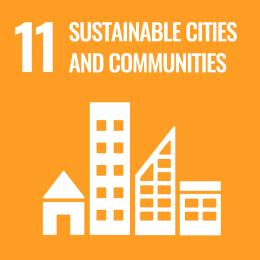PhD in Electronics and Communications Engineering
Current position: Associate Professor at De La Salle University, Philippines
Research focus: organic electronics and green network powered by plants for decision management system in agricultural contexts leading to carbon-neutral agricultural production
In his initial studies, Ronnie found that there are farmers across the Philippines who have low literacy on proper fertilisation and the damage that misapplication can cause to the environment. Agriculture alone contributes more to greenhouse gas emissions than all forms of transportation combined due to inefficient fertigation caused by agricultural mismanagement practices. To avoid this, NPK (nitrogen, phosphorus, and potassium) fertiliser concentrations need to be adapted to the NPK needs of the crops to prevent excess fertiliser from being deposited to the soil and being emitted to the environment. Crop and fertiliser monitoring systems are designed to provide feedback to stakeholders so that they can manage appropriately, but installing such systems on vast open farmland requires an inordinate amount of energy and high infrastructure costs.
In his current research, Ronnie is addressing this problem by developing an innovative and sustainable monitoring solution. To this end, he will extract bioelectricity from plants by implanting organic amplifiers made from graphene oxide-based polymers into plant tissue. This will involve using computational intelligence to optimise the organic circuit design. The goal of his research is to use the organic circuit to extract bioelectricity in all high-level plants, with tomato diamante and dragon fruit plant genotypes as the initial crops of interest, and in forest trees to create a “green network” for environmental monitoring.
The solution consists of a threefold application principle. First, the fabrication of a sap-sensitive polymer that changes its resistance when sap flows through it at different concentrations. The graphene oxide-based polymer can be used to extract energy in vivo from plants and to develop bioelectricity signal amplifiers without electronic semiconductor devices when implanted in the vascular tissue of the plant stem. Second, the integration of computer intelligence in optimising NPK concentration, which could induce crop productivity while improving the variation in sap ion concentration. Finally, the application of computer vision to non-invasively use crop leaf, stem, and root phenotypes as real-time indicators of environmental change and farmer integration. The main challenge in this work is to elucidate the interaction of environmental stressors and NPK-induced stress on the plant and to model the corresponding changes in energy production through the organic circuit.
With this research, Ronnie is simultaneously addressing UN Sustainable Development Goal 2 (Zero Hunger), Goal 6 (Clean Water and Sanitation), Goal 7 (Affordable and Clean Energy), Goal 11 (Sustainable Cities and Communities), and Goal 12 (Responsible Consumption and Production).
Ronnie’s interdisciplinary work and outstanding academic output were highly appreciated by the jury. His very ambitious application showed a high level of commitment, experience at the interface between science, practice, and policy, and a relevant research question with clear reference to the SDGs.
The research of Ronnie mainly contributes to the Sustainable Development Goals 2, 6, 7, 11, 12:
Take a look at this video that briefly introduces Ronnie and his research:











